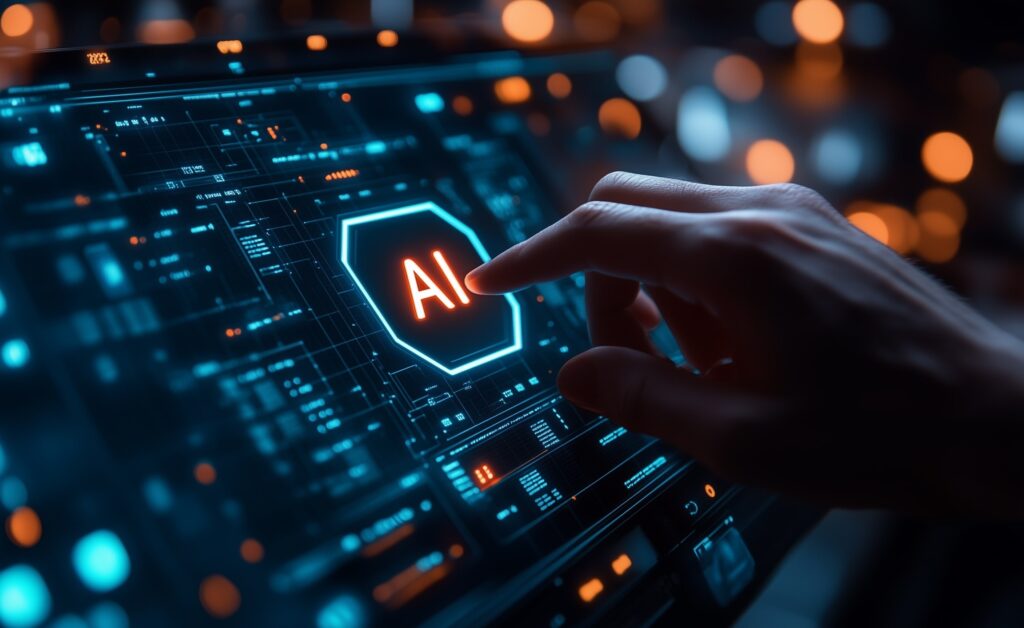Virudhunagar, a serene town in southeastern India, is better known for its ancient temples than for technology. Yet just beyond those sacred sites, locals are helping shape the future of artificial intelligence.
From tradition to technology
Mohan Kumar spends his working hours teaching machines to learn. “I work in AI annotation. I collect data, label it, and train AI models to recognize and predict objects. Over time, they learn to make independent decisions,” he says.
India has long been a global centre for outsourced IT services, with cities like Bangalore and Chennai leading the way. But that work is now shifting to smaller towns, where costs are lower and space is abundant.
This growing trend, called cloud farming, has gained new momentum as artificial intelligence becomes central to global business. Towns like Virudhunagar are fast turning into AI development zones.
Jobs that come home instead of moving away
Mohan Kumar doesn’t regret staying away from the city. “There’s no difference in the work,” he says. “Whether you’re in a big city or a small town, you serve the same clients in the US and Europe. The training and skills are exactly the same.”
He works for Desicrew, a company founded in 2005 that helped pioneer cloud farming. “We realised we could bring jobs to people instead of forcing them to move,” says chief executive Mannivannan J. K. “For too long, cities concentrated opportunities. We wanted to prove that high-quality work can come from anywhere.”
Desicrew handles software testing, content moderation, and AI data training. Around 30 to 40% of its work already involves AI. “That number will soon grow to 75 or even 100%,” says Mannivannan.
Teaching AI to understand humans
A large part of Desicrew’s AI work involves transcription—turning speech into text. “Machines process text better,” Mannivannan explains. “To make AI sound natural, systems must understand how people speak in different dialects and languages. Transcription builds that foundation.”
He rejects the idea that rural areas lack sophistication. “People think rural means backward, but our centres match city IT hubs in every way—secure access, fast connectivity, and reliable power. The only thing different is the location.”
Women make up about 70% of Desicrew’s workforce. “For many, this is their first salaried job,” says Mannivannan. “It transforms their families—providing financial independence and better futures for their children.”
Small towns fuel a big AI revolution
NextWealth, founded in 2008, was another early player in cloud farming. The company, based in Bangalore, employs 5,000 people across 11 offices in smaller towns.
“Sixty percent of India’s graduates come from small towns, yet most IT firms recruit only in metros,” says co-founder and managing director Mythily Ramesh. “That leaves a vast pool of untapped, first-generation graduates. Their parents are farmers, tailors, and police officers who often take loans to fund their studies.”
NextWealth began with outsourced corporate work but shifted to AI five years ago. “Today, the world’s most advanced algorithms are being trained in small-town India,” Ramesh says.
Global clients, local workers
About 70% of NextWealth’s projects come from the United States. “Every AI model—from chat systems to facial recognition—relies on huge volumes of human-labelled data,” Ramesh explains. “That’s the backbone of our work.”
She expects this industry to grow dramatically. “In the next three to five years, AI and generative AI could create around 100 million jobs in training, validation, and real-time monitoring. India’s small towns can power that growth.”
Ramesh believes India’s lead gives it a strong edge. “Countries like the Philippines may follow, but India’s scale and early start offer a five to seven-year advantage. We must use that time wisely,” she says.
Overcoming limits and building trust
Technology expert KS Viswanathan, who formerly worked with India’s National Association of Software and Service Companies, believes rural India stands at a turning point. “Silicon Valley may design the AI engines, but the day-to-day work that keeps them running now comes from India’s cloud farming industry,” he says.
He warns that challenges remain. “If cloud farming continues to expand, small-town India could become the world’s biggest AI hub—just like it became a global IT centre twenty years ago.”
Yet infrastructure is still uneven. “High-speed internet and secure data centres don’t always match city standards,” he says. “That creates ongoing data security concerns.”
He also highlights perception problems. “Some international clients still doubt that small towns can meet global data security requirements. Trust has to be earned through consistent results,” he adds.
The people behind machine intelligence
At NextWealth, Dhanalakshmi Vijay works on improving AI performance. When a model mistakes a blue denim jacket for a navy shirt, she corrects it. “Each correction feeds back into the system,” she says. “The model becomes more accurate over time, just like software that updates itself.”
Her work has a direct global impact. “Our team helps AI systems perform better for millions of users. When you shop online or use digital assistants, our work makes that experience smoother,” she says.
The countryside coding the future
Across India’s smaller towns, a quiet revolution is unfolding. Villagers, students, and young professionals are building the backbone of artificial intelligence. Their work proves that the future of global technology isn’t limited to skyscrapers and city offices—it’s growing in classrooms, homes, and work centres deep within rural India.


